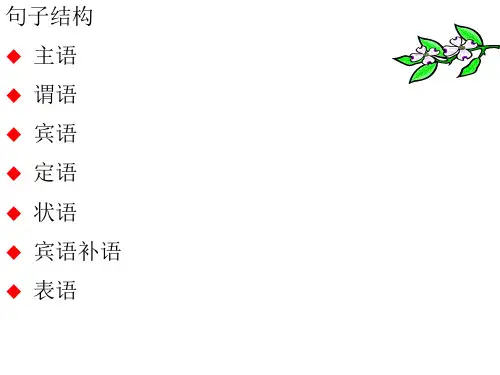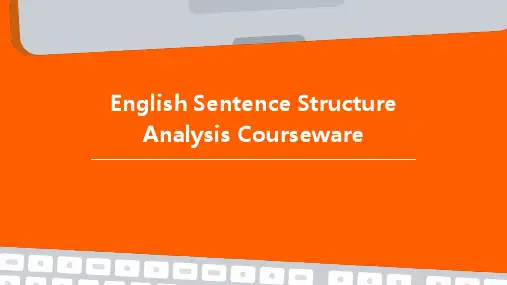do,leave,get,lend,lose,cost,offer,promise,sing, write,deny,envy
5、主语+及物动词+宾语+宾语补足语 如: Marx made London the base for his revolutionary work. The boy made his sister cry. Our teacher encouraged us to work hard.
8、同位语:把一个名词(短语)、代词
或从 句放在另一名词或代词后,用 以说明前者的性质或情况,这样的名词代 词或从句叫同位语。
1) We Chinese people love peace. 2)Our monitor,Li Qiang , is a
warm-hearted guy. 3)I heard the news that we had won
作状语的有:副词(短语)、介词短语、 不定式、分词(短语)、名词短语和状 语从句。
状语说明时间、地点、原因、目的、结 果、条件、让步、程度、方式、伴随情 况等。
其位置多位于句首或句尾;修饰动词的常 跟在动词后面;但表频率或程度的副词应 位于句中be动词、情态动词和助动词之 后,实义动词之前。
7、补足语:补充说明句中的主语
2、主语+谓语(及物动词或短语)+ 宾语 如:
They decided to hold a class meeting. We depend on our parents for food
and clothing.
3、主语+谓语(不及物动词或短语) (+状语) 如: The sun rises in the east. The Opium War broke out in 1839.
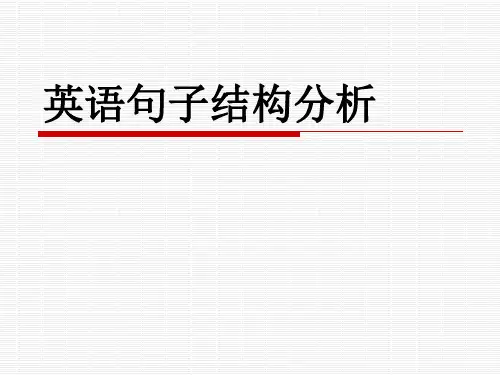
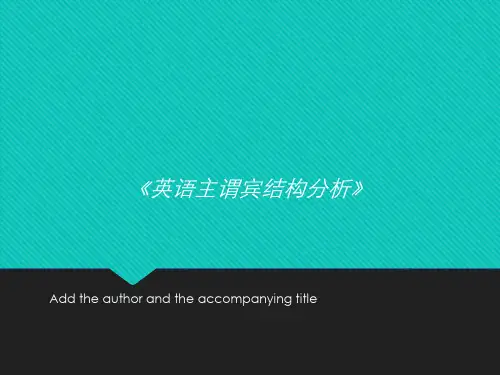
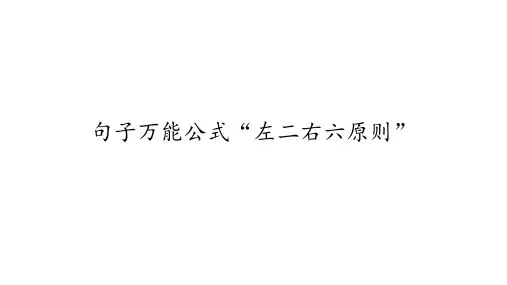
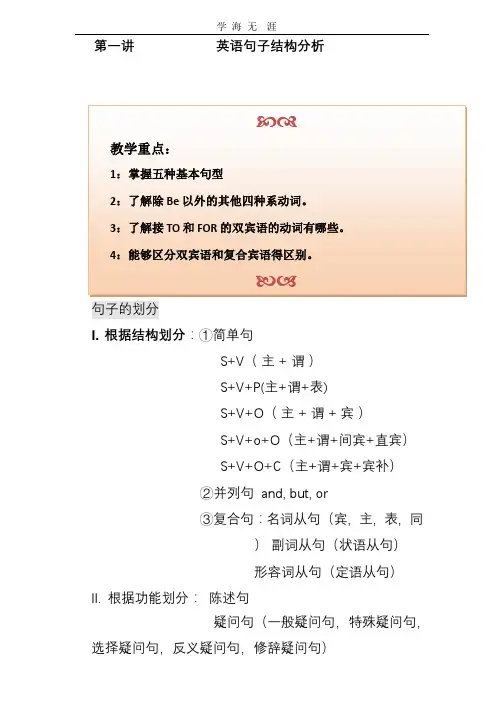
![英语句子成分分析英语句子结构讲解PPT[最新版]](https://uimg.taocdn.com/33a0b388ba4cf7ec4afe04a1b0717fd5360cb2b1.webp)
